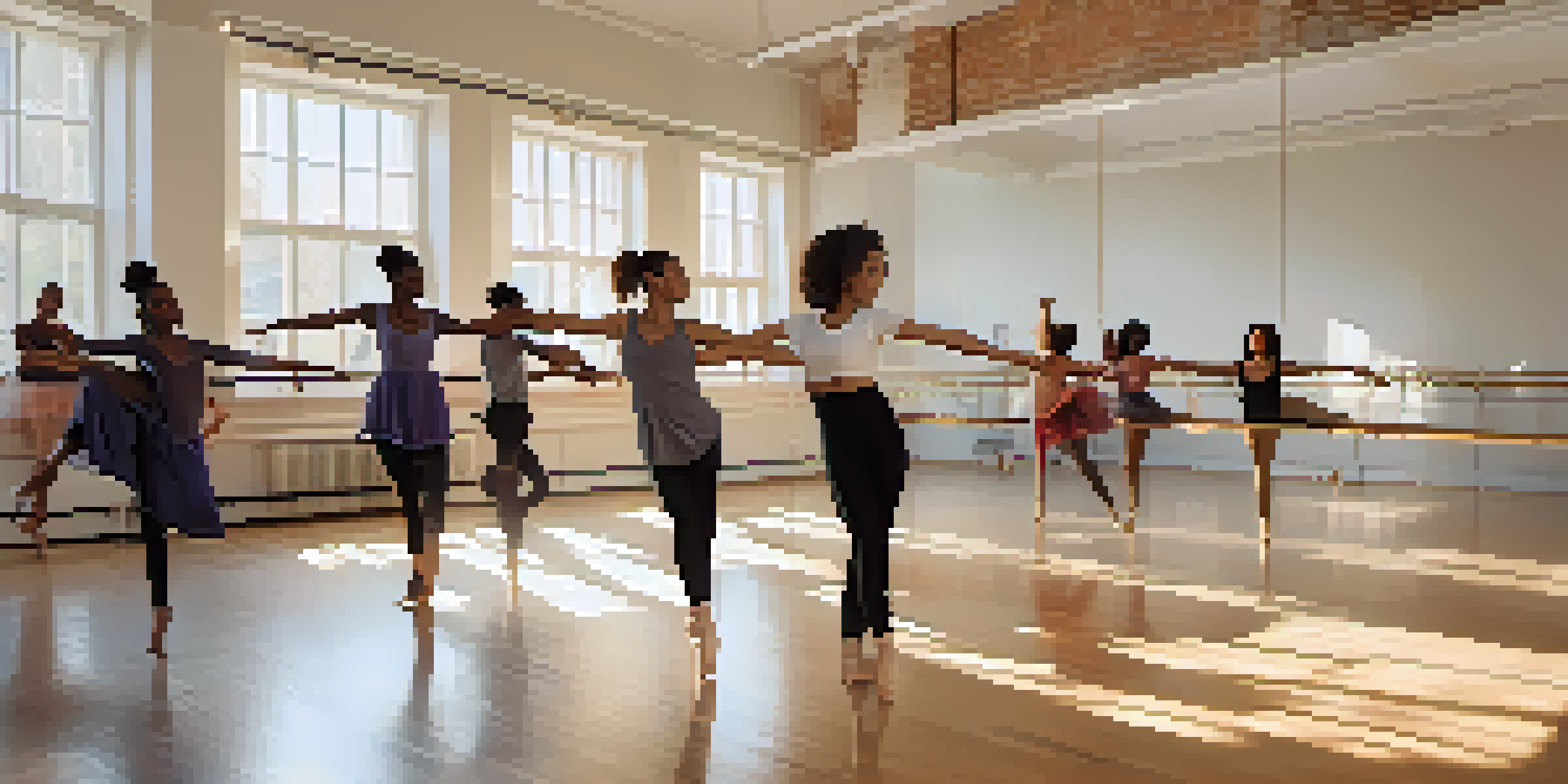Dance Therapy: Addressing Gender Issues Through Movement

Understanding Dance Therapy: A Healing Art Form
Dance therapy is a creative approach that uses movement to promote emotional, cognitive, and social integration. It encourages individuals to express themselves through dance, which can lead to a deeper understanding of their feelings and experiences. By engaging in this form of therapy, participants can explore their identities and the societal roles imposed on them, especially concerning gender.
Dance is the hidden language of the soul.
This therapeutic practice is particularly beneficial for those grappling with issues related to gender identity and expression. It provides a safe space where individuals can express their emotions without the constraints of language. Through movement, participants can discover new ways to communicate their struggles and triumphs, ultimately fostering self-acceptance and empowerment.
In essence, dance therapy serves as both a personal journey and a collective experience, where individuals can connect with others facing similar challenges. This shared movement can build community and support, which is essential when addressing complex gender issues.
The Impact of Gender Norms on Mental Health
Gender norms can significantly affect an individual's mental health, often leading to feelings of inadequacy or isolation. These societal expectations can create pressures that individuals struggle to meet, resulting in anxiety and depression. Recognizing the impact of these norms is crucial in understanding how dance therapy can provide an outlet for healing.

In dance therapy, participants can challenge and redefine these norms through movement. They may find that engaging in expressive dance allows them to break free from societal constraints, facilitating a sense of liberation. This process can be particularly transformative for those who feel confined by traditional gender roles.
Dance Therapy Empowers Self-Expression
Through movement, dance therapy allows individuals to express their emotions and explore their gender identities in a safe environment.
By embodying their true selves in a safe environment, individuals can confront and dismantle the negative effects of gender norms. The act of movement becomes a powerful tool for reclaiming identity and nurturing mental well-being.
Creating Safe Spaces Through Movement
One of the most significant benefits of dance therapy is its ability to create safe spaces for individuals to explore their gender identities. In these environments, participants can express themselves freely, without fear of judgment or ridicule. This sense of safety is vital for anyone navigating the complexities of gender issues.
The body says what words cannot.
Dance therapists often emphasize the importance of consent and respect within these spaces, ensuring that everyone feels comfortable to share and explore. This respectful framework allows participants to engage in movement that reflects their personal experiences and identities. As individuals move together, they can foster a sense of belonging that is often lacking in other areas of their lives.
Ultimately, creating these safe spaces through dance therapy not only supports individual growth but also cultivates community. Participants can find solidarity in their shared experiences, reinforcing the idea that they are not alone in their journeys.
Expressing Gender Identity Through Dance
Dance is inherently expressive, making it an ideal medium for exploring gender identity. In a dance therapy setting, individuals can use movement to convey their feelings about their gender experiences, whether through powerful, assertive movements or gentle, nurturing gestures. This exploration can lead to profound insights and a stronger connection to one's identity.
For many, dance serves as a bridge between their internal experiences and external expressions. For example, someone questioning their gender identity might feel liberated when dancing in a way that defies traditional gender norms. This liberation can prompt deeper self-reflection and acceptance, allowing participants to embrace their true selves.
Challenging Gender Norms Through Movement
Participants in dance therapy can confront and redefine societal expectations, fostering liberation and self-acceptance.
Moreover, the diverse forms of dance available—from ballet to hip-hop—offer various avenues to express gender identity. Participants can choose styles that resonate with them, creating a personalized journey of self-discovery and affirmation.
Building Resilience Through Movement
Dance therapy not only facilitates self-expression but also builds resilience among participants. Resilience is the ability to bounce back from challenges, and movement can be a powerful tool in developing this skill. By engaging in dance, individuals learn to navigate their emotions and confront obstacles related to gender issues.
Through regular participation in dance therapy, individuals can cultivate coping strategies that enhance their resilience. For instance, movement can serve as a physical release for pent-up emotions, helping participants process their feelings in a constructive way. This ability to manage emotions can be crucial when faced with societal pressures or personal challenges.
Furthermore, the supportive community formed in dance therapy can reinforce resilience. Participants often uplift each other, sharing their stories and encouraging one another to persevere. This collective support can empower individuals to face their challenges with renewed strength.
The Role of Dance Therapy in Community Building
Beyond individual healing, dance therapy plays a vital role in fostering community among those grappling with gender issues. As participants share their experiences through movement, they create connections that transcend traditional social barriers. This sense of community can be particularly reassuring for those who often feel marginalized or isolated.
Group dance therapy sessions encourage collaboration and teamwork, allowing individuals to support one another in their journeys. By moving together, participants develop a shared language of expression that fosters empathy and understanding. This collaborative spirit can significantly enhance the therapeutic experience.
Building Community and Resilience
Dance therapy promotes a sense of belonging and support, helping individuals develop resilience while navigating gender issues.
In essence, dance therapy promotes a sense of belonging, reminding participants that they are part of a larger community. This connection can be a powerful motivator for change, inspiring individuals to advocate for themselves and others facing similar challenges.
Conclusion: The Future of Dance Therapy and Gender Issues
As society continues to evolve, the role of dance therapy in addressing gender issues will likely expand. Increasing awareness of gender diversity and the importance of mental health means that more individuals may seek out therapeutic approaches like dance. This growing interest could lead to innovative practices that further enhance the effectiveness of dance therapy.
Future developments might include incorporating technology, such as virtual reality, to create immersive dance experiences that reach even wider audiences. These advancements could help break down geographical barriers, allowing individuals from diverse backgrounds to access dance therapy.

Ultimately, dance therapy holds great promise in empowering individuals to navigate their gender identities and challenges. By harnessing the transformative power of movement, we can continue to create inclusive spaces that celebrate diversity and promote mental well-being.